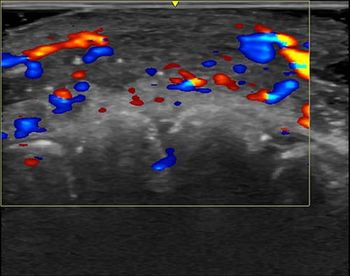
GE withdraws from DIN-PACS bidding to focus on private-sector business
Vendor will continue to maintain MDIS installed base, howeverGE Medical Systems last week formally announced the withdrawal of its bid for the Defense Imaging Network-Picture Archiving and Communications Systems (DIN-PACS) project, the successor
Vendor will continue to maintain MDIS installed base, however
GE Medical Systems last week formally announced the withdrawal of its bid for the Defense Imaging Network-Picture Archiving and Communications Systems (DIN-PACS) project, the successor to the military's groundbreaking Medical Diagnostic Imaging Support (MDIS) initiative.
GE made the decision after it was unable to meet two requirements of the project, according to the Milwaukee-based company. Since developing those capabilities were not consistent with GE's plans for its commercial product line, the company made the difficult decision to withdraw, said Varda Peskowitz, global marketing manager for GE's Integrated Imaging Solutions division.
"We worked through this process and went through all of the benchmark testing and all of the RFP (request for proposal) responses, and there were just some requirements that we had hoped we would be able to get the government to relax on, but we weren't able to convince them to do that," she said. "Based on what the requirements were, they did not fit (with) our commercial product road map, and so we had to make the decision at the final hour to withdraw."
GE would not disclose the specific requirements it was unable to meet, since the Department of Defense's Defense Personnel Support Center (DPSC) has prohibited discussion of the RFP details until after the bids have been awarded. The DIN-PACS project has drawn much interest in the PACS community, due to both the extent of information required in RFPs as well as its potential value to those vendors that succeed in the bidding process.
As reported in June in our sister publication PACS & Networking News, the RFP ran over 350 pages and went into minute detail about the technical specifications the government requires for DIN-PACS installations. The bids were all submitted by the end of April.
While only three military projects were specified in the RFP, it is likely that as other military hospitals convert to digital image management, they will conceivably purchase only those PACS and telemedicine systems offered by vendors validated by the DIN-PACS process. Estimates of the potential value of the DIN-PACS contracts range from $300 million to $1.25 billion.
Unlike the sole-vendor approach taken by the military with the MDIS project, two or three consortia will be selected, creating competition for DIN-PACS bids. As part of the selection process, benchmark testing and site visits occurred throughout the summer. A source close to the project indicated that the DIN-PACS awards will be issued soon, possibly by the end of this month.
While some vendors have declined to confirm their participation in the project, in June the field had apparently narrowed to four other teams besides GE:
Agfa as a prime contractor, with Cerner supplying the RIS and Cabletron supplying the networking components;
Defense systems integration firm BTG as a prime, with Siemens providing PACS;
Telecommunications company GTE as a prime, with Imation/Cemax-Icon subcontracted to provide a PACS component; and
IBM's Worldwide Government Industry division as a prime, with Brit Systems supplying PACS software and Eastman Kodak participating as well.
Newsletter
Stay at the forefront of radiology with the Diagnostic Imaging newsletter, delivering the latest news, clinical insights, and imaging advancements for today’s radiologists.




























